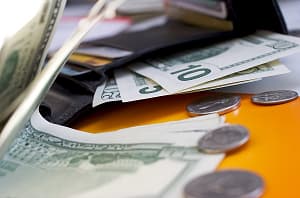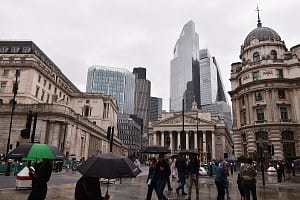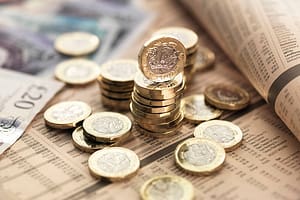Remember the trader who told the BBC that “Goldman Sachs rules the world”? This is his column
Our columnist Alessio Rastani is the self-proclaimed trader who shocked the world by declaring live on BBC News that he goes to bed “every night dreaming of the next recession” and that “Goldman Sachs, not the governments, rule the world”. He’s a controversial figure, not least because he’s a self-taught non-institutional trader with no FSA license. But he certainly isn’t shy about sharing his views. Do you agree with his words? (His words are his own, and in no way endorsed by LondonlovesBusiness.com)
On Thursday night, Twitter revealed its filing for a proposed IPO. The San Francisco company founded in 2006 Twitter also said that it would list under the symbol “TWTR”.
Of course, what we are all really interested in is “When do we buy it?” and “how do we make money from it?”. Right?
Or perhaps a better question would be whether Twitter would be “too risky” to buy considering the “curse” of web IPOs that I warned about when Facebook IPO was launched in May 2012. Risk is a major factor any level-headed investor should be thinking about.
So let me show you 3 things that the Twitter IPO will NOT tell you, based on historical precedents of web IPOs and a bit of technical analysis.
1. “You should probably do NOTHING when my stock is launched”.
This warning will fall on many deaf ears I have no doubt. When Facebook debuted on the stock market in May 2012, I warned in this column that the safest thing to do was to stand aside until the dust has settled.
Facebook shares plunged after it peaked at $45. Within a week it had dropped by nearly 30%!
So at this stage, we need to stand aside and just see how the market reacts to the stock after its launch. We don’t want to be caught up in the emotions of the herd.
2. “Wait for my stock to drop to 50% of its initial highs before you buy”
One thing we have noticed from previous examples of web IPOs such as Facebook, LinkedIn, Groupon and Zynga is that they all fell to at least 50% of the highs they made when their stock first launched on the market.
Take a look at this table which shows by how much each web stock dropped after its initial public offering:

In almost every case web IPOs fell by approximately 50% of their initial highs five months after their launch. Zynga eventually fell by a staggering 82% of its initial highs a few months later. Groupon fell by 92% of its initial peak after launch! That must have hurt…
Of course, this is not an exact science and there have been exceptions such as Google which rallied hard after its launch. However, as I explained last year Google’s IPO was launched when web stocks were out of favour and at the time it did not have a cult following the same way that Twitter and Facebook now do.
Twitter’s IPO price is currently considered to be in the $28 to $30 a share range. Assuming that twitter is going to be $30 per share upon its launch, and assuming that it may follow the historical pattern of web IPOs, that may give us a clue as to where it may be heading to in its first five months…
3. “The best time to buy me is after I start carving out a bottom”
The next and final stage is to wait for the stock to begin “carving out a bottom”. In other words, should the stock fall after its launch, we need to prepare for when it may be a good time to buy. This will require a lot of patience but is worth the wait.
The best chart patterns for this are “double bottoms” and “head and shoulders”. The head and shoulders has one advantage in that the market has already made a “higher” low, indicating that the stock could be starting an uptrend.
Let’s take a look at some examples:

From the above chart we can see that Facebook started forming a bottom after it plunged by 50% from its initial highs. The red arrow shows when the stock started forming higher lows in October 2012, the first indication of an uptrend. Also, by this time the sentiment towards Facebook had soured, making it attractive for “nibbling” on the stock.

LinkedIn shares rebounded hard after dropping 50% from their initial highs. They re-tested those $60 lows again in November 2012 before starting an uptrend. This is more a case of a “double bottom” in chart analysis – a powerful reversal pattern.
Groupon

Groupon suffered the most out of its web stock cousins. Even though the 50% drop in the stock after its launch did not put a floor in its decline, it did eventually put a floor in at $2.60 in November 2012. Then it began to make higher lows and formed a “head and shoulders” reversal pattern. A break above $6 was a viable buy opportunity for Groupon.
Twitter IPO
As you can see from the above examples, history does not necessarily repeat itself but it does “rhyme” as the saying goes.
Twitter may defy the historical precedents and do none of the things discussed in this article. It could turn out that it will be a highly successful IPO and that the stock will “skyrocket to the moon” after its launch.
However, given the huge publicity that this IPO has had which means that “the herd” most likely will be rushing in to buy this stock, I doubt that Twitter or TWTR will defy history.The herd is usually wrong and it’s probably wrong in this one too.
As a drunken Irishman once said: “I’ll go this far, and no farther…”.
Alessio Rastani gained fame and caused controversy last year by stating live on BBC news that he “dreams of another recession” and that “Goldman Sachs, not governments, rule the world”. The YouTube clip has since been watched over two million times, and Alessio has subsequently been interviewed by figures such as Sir David Frost. His website is LeadingTrader.com.
- Try our free newsletter
- Follow us @LondonlovesBiz






Leave a Comment